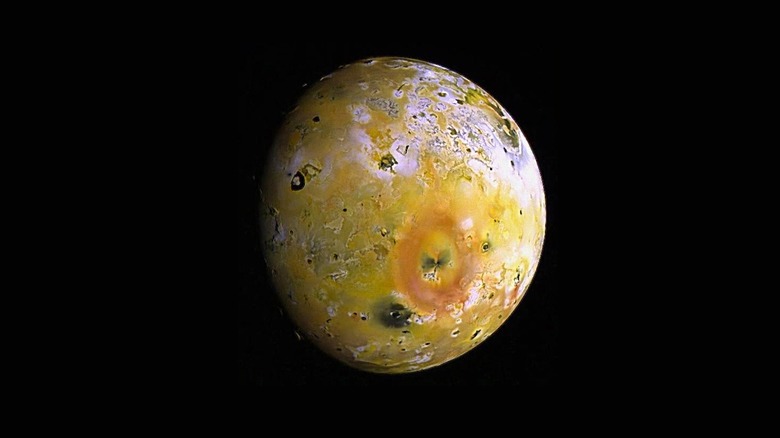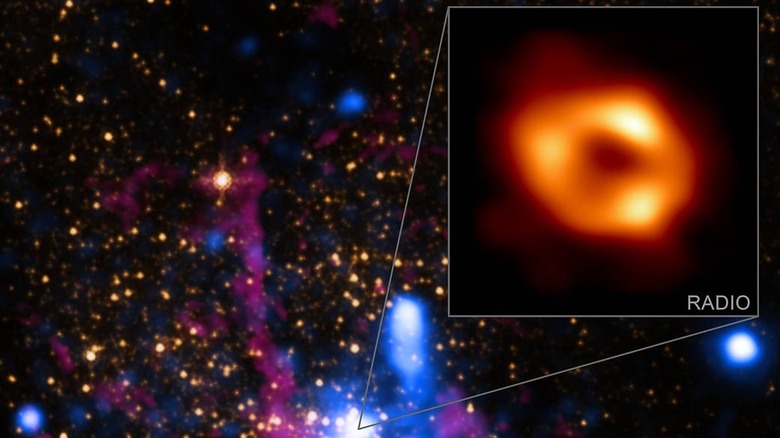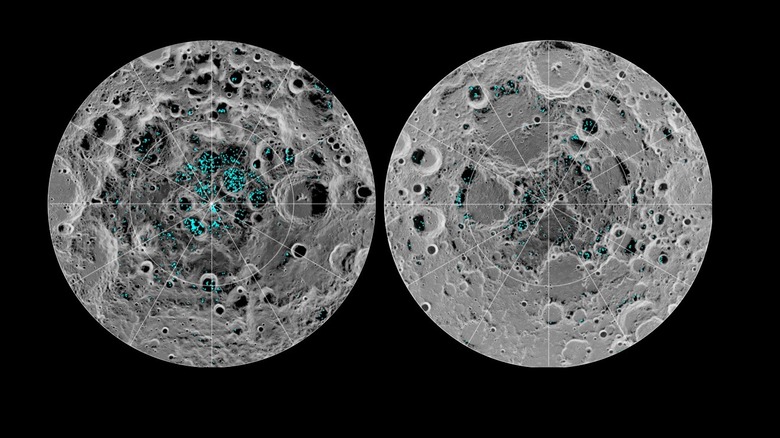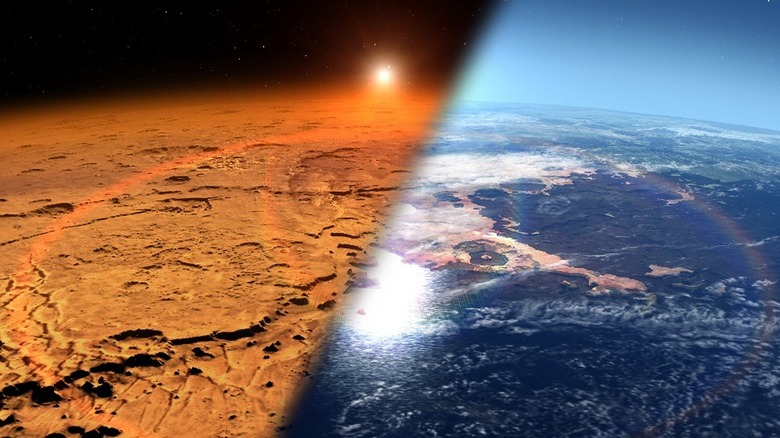12 Coolest Science Discoveries Of May 2022
From the smallest organisms on Earth to the largest objects in the universe, there is one thing that binds them all together: science! We have been chipping away at the mysteries of our existence for as long as we've been capable of looking up at the night sky and wondering at its majesty.
Sure, we've made some missteps along the way. For instance, it's clear now that the Sun doesn't revolve around the Earth and our health isn't controlled by humors. There are things we believe today which will likely turn out to be wrong or only a piece of reality. The process of science is one of constant discovery and refinement, inching ever closer to the truth. With that in mind, the work of science is never done and instead races onward all the time. If we don't pay close attention, it's easy to miss some pretty big discoveries.
Over the last month, scientists from every field have designed new experiments, made new observations, and published new discoveries. Much of that work was built upon years or decades of previous work and only just made its way into the news cycle. Some of it we won't hear about for years yet. Still, with everything going on in the world, there's a lot to celebrate. To that end, these are twelve of the coolest science stories from May 2022.
Lava dunes on Jupiter's moon Io
Jupiter, the largest planet in our solar system, is by some measures a microcosm of a star system all on its own. It has a mass roughly 318 times that of the Earth (via NASA), which acts as a large gravity well around which dozens of moons orbit, each of them stranger than the last. Most famous among them are the four largest Jovian moons: Ganymede, Calisto, Europa, and Io (pronounced eye-oh).
That last moon on that list is the most volcanically active world in the solar system as a consequence of the huge gravitational pressure it endures from Jupiter, the Sun, and the other moons in its cosmic neighborhood. Because it's so geologically active, its surface is constantly being reshaped, and scientists have long thought that the primary source of that reshaping was the lava flows themselves. Now, a new study published in the journal Nature Communications suggests there could be more going on.
Despite Io's comparatively thin atmosphere, the new research indicates that interactions between subsurface lava flows and sulfur dioxide might be sufficient to generate winds and blow sand particles around, creating dunes on the surface of Io. If that's the case, it means that dune worlds might be more common than we thought. Sadly, there's be no word on whether there are any sandworms living on Io.
Light-based cancer detector
At present, any time you visit a doctor for a suspicious mark on your skin, you're likely to get a biopsy. That's because dermatologists don't want to miss potential cancer, so they check almost everything, even if they're pretty confident it's benign. Today, between 15 and 30 biopsies are completed on benign skin lesions for every confirmed case of skin cancer. That means getting a piece of your tissue cut out, sent to a lab, and waiting for results. It's painful and results in unnecessary medical anxiety in the majority of cases, but it's currently our best method of ensuring a patient's health.
In an effort to establish a faster and less invasive diagnostic tool, while maintaining a comparable level of efficacy, scientists have developed a device that uses millimeter-wave light (the same technology used to scan you at the airport) to detect skin cancers. The development of this device was detailed in a paper published in Nature.
When the light hits a skin lesion, it creates backscatter patterns which are different depending on if the tissue is benign or cancerous. The imaging process takes only about 20 seconds and can even differentiate between types of cancers. Today, the imaging machine is about the size of a table, but researchers are hoping to miniaturize it into a handheld device.
Our very own black hole
Astronomers using the Event Horizon Telescope captured the very first pictures of a black hole when they imaged Messier 87, a black hole roughly 55 million light years from Earth. Now, scientists have turned the telescope on a target closer to home by looking inward at our own galaxy to glimpse the supermassive black hole at the center of the Milky Way.
Our very own black hole, known to astronomers as Sagittarius A* (pronounced Sagittarius A Star, a confusing name for a black hole, we know) is only 26,000 light years away (via NASA). It serves as a gravitational anchor around which our galaxy spins.
Prior to these observations, astronomers strongly believed there was a black hole approximately 4 million times the mass of the Sun present in the center of our galaxy, but the EHT images provide the strongest evidence and the first visual confirmation of its presence (via ESO). While the black hole can't be seen in the image — darkness is kind of a hallmark of black holes — the glowing disk of gas being bent around it is precisely what we would expect to see when peering at the dark heart of our galaxy.
Bees can do math
To the dismay of school children everywhere, at some point in our history humans decided to invent math as a way of quantifying and calculating phenomena in the natural world. Certainly, mathematics has revealed countless secrets about the natural world but it's also a unique torture that only humans are subjected to, right? Not so fast. A series of experiments using bees has confirmed that they are capable not only of doing simple arithmetic (adding or subtracting one from a previous total) but they can also complete number parity tasks, distinguishing between even and odd quantities.
The study, published in the journal Frontiers in Ecology and Evolution, used bees as model organisms to study the way brains interact with abstract concepts like the categorization of even and odd numbers. Bees are able to accomplish these mathematic tasks despite having relatively small brains containing only about a million total nerves, as compared to the 86 billion in a human brain (via Science Daily). This suggests that seemingly complex tasks can be accomplished through relatively simple methods.
Consequently, scientists developed a synthetic neural network comprised of only 5 neurons and found that it, too, could categorize numbers. Whether that means that bees are especially smart or humans are especially inefficient remains to be seen.
Discovery of the largest marine reptile
The largest aquatic animal to have ever lived is still swimming in the world's oceans today. The blue whale, a relatively calm-tempered cetacean mammal, survives on gulping mouthfuls of krill but in the distant past, the waters were filled with a wholly different type of swimming giants.
While megalodons get all the press and most of the best movie roles, they were probably similar to the great white sharks which still swim the world's oceans today. To get to the really big baddies, you need to go back to the age of aquatic reptiles during the reign of the dinosaurs. That's where scientists recently discovered the largest aquatic reptile ever found.
While aquatic reptiles are often grouped together with dinosaurs in the public consciousness, they actually represented a wholly different group of animals and some of them grew truly massive. The partial remains of a Late Triassic ichthyosaur from the Kössen Formation in the Swiss Alps don't present a full story but suggest that it may have exceeded 20 meters in length. Scientists looked at other fossil specimens and compared the bits of bone they recovered to estimate its size.
All things considered, we're glad to live in a world where our largest animals are whales instead of 20-meter killing machines.
Volcanic ice water on the Moon
We've known since 2009 that there are caps of frozen water ice at the Moon's north and south pole, (via Science News), but so far, it has been largely unclear precisely how it got there. Previous hypotheses have included solar wind synthesis (chemical interactions with the solar wind and the Moon's surface) and delivery by asteroid and comet impacts. Now, a new study suggests a significant fraction of the Moon's water ice might have been unleashed by volcanic activity between 2 and 4 billion years ago.
The study, published in The Planetary Science Journal, used data from the Lunar Reconnaissance Orbiter to create models of water on the lunar surface in the Moon's distant past. While impact delivery is likely still a significant contributor to the overall presence of water, volcanic release might be comparable in terms of the total mass of water ice.
Among the compounds released during a volcanic eruption, water would have been unleashed into space and all of that particulate matter could have created temporary atmospheres around the Moon. While they wouldn't have remained for long on geologic timescales, they could have been sufficient to help sequester water in the cold traps at the north and south poles. Future studies from the VIPER rover as well as crewed lunar missions hope to further study the Moon's water stores.
Crystal time capsules of the Earth's crust
Our planet wasn't always the relatively chill place it is today. Early in its existence, it was a roiling mass of molten rock; a global lake of lava. It took a while before the surface cooled and created land solid enough to stand on. Precisely how long that took has been a matter of some debate among planetary geologists.
New research published in the journal AGU Advances, looked at zircons — crystal structures formed under high pressure — and found evidence that the Earth may have had solid plates as early as 3.8 billion years ago.
Zircons are incredibly hardy and stand up against erosion in ways that other types of rocks don't. That makes them particularly useful as a way of peering back into the deep past of our planet. While looking at the zircons, some of which were more than 4 billion years old — that's only about half a billion years after the planet formed (via NASA) — scientists found clues indicating a change in the Earth's surface at around 3.8 billion years ago. That change suggests the presence of subduction zones in tectonic plates around that time. It's incredible that even while the Earth was still incredibly hot, it was cool enough to leave behind crystal time capsules for us to investigate 4 billion years later.
Silk tattoos measure oxygen in your blood
The cyberpunk tattoos of your dreams are here and they're made of silk. There are times when a doctor or patient might need access to continuous monitoring of some physiological aspect like blood oxygen levels, blood glucose, or electrolytes. To that end, scientists have created an implantable material capable of interacting with elements of the body and giving an observable reading on the skin.
In a study published in the journal Advanced Functional Materials, scientists describe a gel made partially of silkworm silk proteins doped with light-reacting pigment. The material can be implanted in the skin through a number of methods, including by tattooing it directly or by forming a disk that is surgically placed. The material is safe for use in the body and breaks down over a number of months or years. Before it does, a user can shine a light on it and gain real-time insights about their own body by measuring how long the pigments glow.
In the study, scientists focused on a material that would display relative blood oxygen levels, but they're looking to use the same method to create materials that could measure blood glucose levels, electrolytes, and more. They're also hoping to modify the materials so that they would react to ambient light allowing users to gain real-time insights without the need for any additional lighting equipment.
Mars had water more recently than we thought
It's commonly hypothesized that Mars was once a world that more closely resembled modern-day Earth, complete with large oceans, lakes, and river systems moving over the surface. It's possible — although there's no evidence just yet — that those water systems might even have harbored life in Mars's ancient past. That's part of the mission of the Perseverance Rover, which landed at Jezero crater, an ancient river delta, and is looking for signs of past life (via NASA).
Previous estimates suggested Mars may have lost its water as far back as 3 billion years ago, but recent research suggests it may have stuck around much longer. In May of 2021, China landed the Zhurong Rover at Utopia Planitia where it has been studying the Martian landscape. According to a study published in the journal Science Advances, the rover observed hydrated sulfate/silica materials near the landing sight which are consistent with younger liquid water on the surface.
The hydrated minerals might have formed in the presence of groundwater or melting subsurface ice during a period of resurfacing. Their statistical analysis indicates this area of Mars may have been resurfaced as recently as 700 million years ago. That's potentially good news for any nascent life which may have been setting up shop there, and for scientists studying the history and current state of the red planet.
Gene editing for heart health
At present, heart disease is the number one cause of death in the United States, with nearly 700,000 deaths in 2020 accounting for over 20% of total mortality (via CDC). As explained by Harvard, medical professionals recommend changes in lifestyle including cessation of smoking, keeping a healthy body weight, exercising, and eating a healthy diet as methods of preventing heart disease. Now, there might be a genetic solution for preventing some of the contributing factors of negative heart health.
Ever since CRISPR-Cas9 (a method for editing genetic information) showed up on the scene, it has been the topic of excitement, speculation, and experimentation. It has shown some incredible successes in the lab but significant everyday use of the technology on living humans has failed to manifest. That might be about to change.
Verve Therapeutics, a company whose primary aim is to reduce mortality from heart disease, is planning to run human trials on patients who have already experienced cardiac events. The goal is the editing of genes that are responsible for a build-up of LDL, commonly known as bad cholesterol. If it works, gene editing could modify inherited conditions which result in an unusual build-up of cholesterol. It wouldn't necessarily take the place of preventative lifestyle changes, but it could reduce the disproportionate risk experienced by some segments of the population.
What black holes sound like
Black holes are famous for gobbling up everything crossing beyond their event horizon, but it turns out they're sending something out into the universe as well. Using data from the Chandra X-ray Observatory, scientists found that the black hole at the center of the Perseus galaxy cluster is producing pressure waves that ripple into space. They've used those pressure waves to create sonifications you can listen to.
Soundwaves are, after all, pressure waves, so translating them into sound wasn't much of a stretch but it did require some modifications in order to bring them into a range humans can hear. It's famously been said that in space no one can hear you scream, and that's true if and when you find yourself in a vacuum with nothing for soundwaves to travel through. The galaxy cluster at Perseus, however, is full of gas and dust which provides a medium for the soundwaves (via NASA).
Astronomers took the pressure waves measured by Chandra and ramped them up 144 quadrillion and 288 quadrillion times higher in frequency in order to enter into a sound register humans can pick up. These recordings (embedded above) are what you might hear if you found yourself in the vicinity of Perseus with ears capable of hearing 57 octaves below middle C.
Plants grown in lunar soil
Between 1969 and 1972, humans set foot on the Moon a total of six times (it would have been seven if not for the fateful events of Apollo 13), carrying 12 astronauts to the lunar surface. While there, Apollo astronauts gathered up samples of lunar regolith and brought them back home. Those tiny piles of moon dirt have been patiently waiting (and being studied) for a day that has finally come.
Scientists have, for the first time, grown plants in lunar soil (via NASA). To pull off this incredible feat, scientists took three lunar regolith samples measuring only one gram each, taken from Apollo 11, 12, and 17. They added water, a nutrient solution, and seeds of the plant Arabidopsis thaliana. The results of their study were published in the journal Communications Biology.
To the surprise and delight of scientists, the seeds sprouted and grew after two days in the lunar regolith. While the experiments were a success, the plants did struggle to grow in the regolith, exhibiting less growth than control plants which were sprouted in volcanic ash beginning at about day six.
After 20 days of growth, scientists harvested the plants, ground them up, and looked at their RNA to see what differences there might be. Those findings suggested the plants grown in lunar soil were under significant stress as a result of their unusual growth medium. Still, this work could open the door to growing crops on the Moon during future crewed missions.












